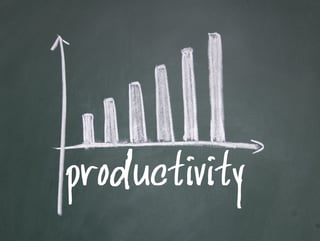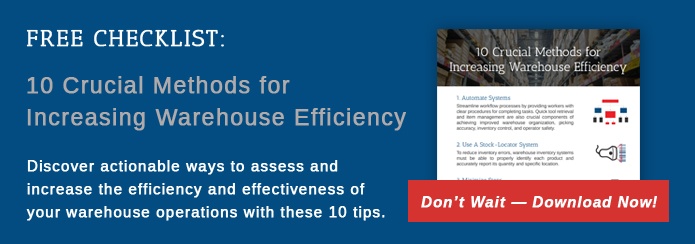 Every second counts in the fight for warehouse efficiency. It takes concentrated effort to eliminate wasted time and maximize labor productivity on the warehouse floor. Fortunately, numerous studies have been done that highlight the ways that most warehouses can reduce down time and improve results.
Every second counts in the fight for warehouse efficiency. It takes concentrated effort to eliminate wasted time and maximize labor productivity on the warehouse floor. Fortunately, numerous studies have been done that highlight the ways that most warehouses can reduce down time and improve results.
- Unique Storage Locations - Stowing multiple SKUs or product IDs within a single location can make the picking process unnecessarily complicated. It adds a possible point of inaccuracy, and forces your picker to dig through multiple SKUs to find the correct one for the order. At first it may seem like only a couple extra seconds, but in reality you could be looking at a full minute of wasted time for every 4-5 items picked. Over the course of the day that adds up. Using unique storage locations for each SKU will solve this problem.
- Hot Zones and Picking Density - Many warehouses have learned the importance of picking density and how it interacts with their fastest moving items. Having all of your products mixed together in no particular order means that your pickers need to move further between each pick location. They may be walking past hundreds of locations before reaching their next item. Creating a hot zone where high volume items are close together limits movement and congestion, and ensures that your pickers are traveling less while performing more picks. Now they need only pass up, say, 10-20 locations between items instead of 100.
- Utilize Real Time Inventory Controls - Some of the biggest slowdowns occur when there is a discrepancy between expected inventory and actual inventory. If an item is not available to be picked, the order cannot be fulfilled and your picker is forced to research the location of the product they need, or send the order into a holding pattern until new inventory arrives. Modern warehouse management tools eliminate this snag in warehouse efficiency and prevent out of stocks as best as possible.
- Don't Forget About Packing - The packing part of the process is another area subject to unexpected delays. Incomplete orders and wasted effort spent trying to cram products into the wrong size boxes can stop shipments from leaving on time. Using a WMS that takes into account order and item size to create a packing plan is a great way to skip the puzzle and jump straight to the shipping dock.
- Listen to Your Employees - Even the best WMS software can't account for everything. Your employees need to be engaged in the process in order for productivity to improve. They are also a good source of information about congestion in certain areas of the warehouse, or problems with specific items in the racks. Check in with them occasionally and they would be happy to tell you what is making their job harder than necessary.
Improving warehouse efficiency is a small numbers game. Most of the changes you make will shave seconds off of tasks, rather than minutes or hours. However, those seconds add up across the entirety of your workforce and can create major shifts in your overall productivity.




